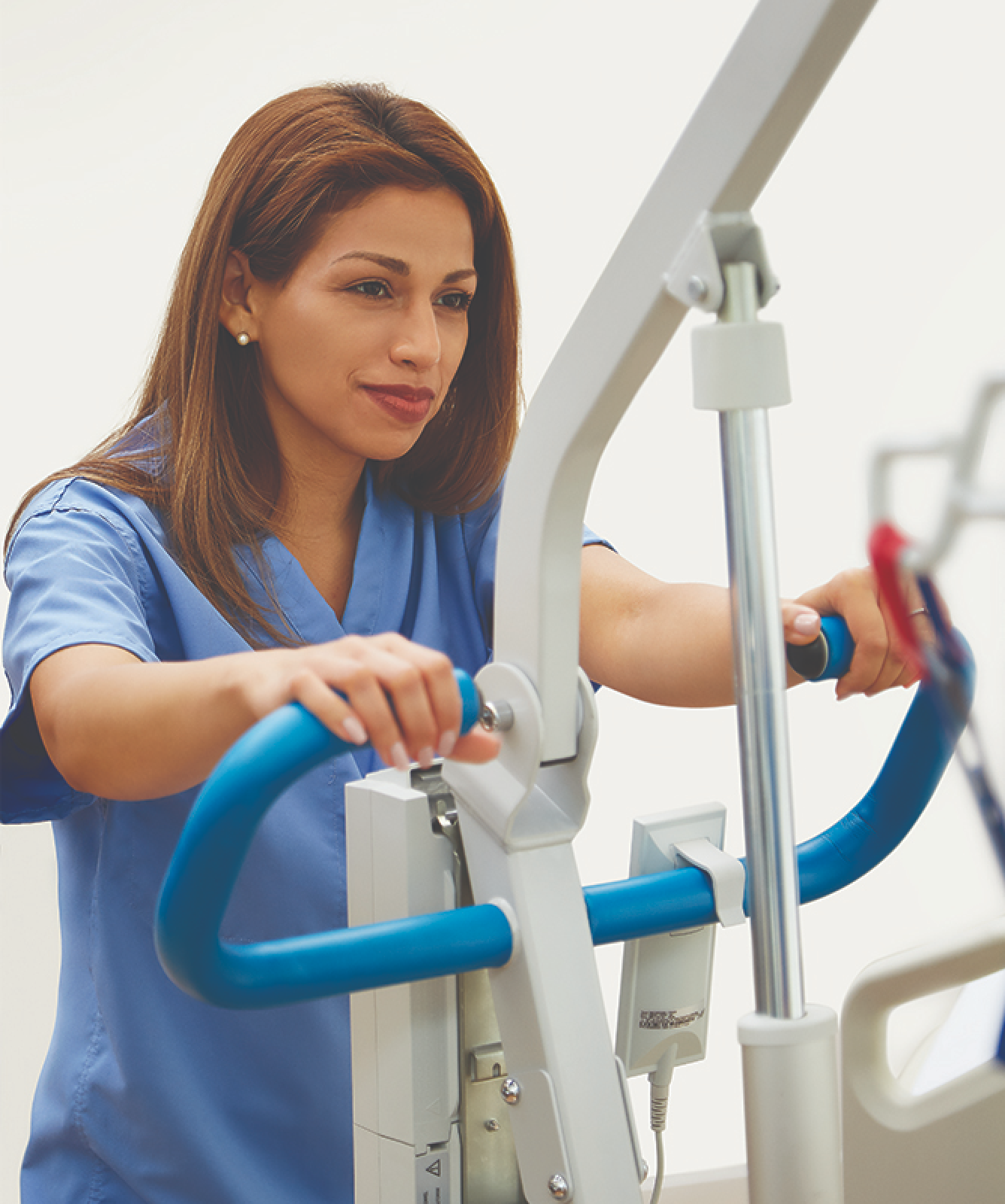Nursing-driven progressive mobilization: why it matters

Immobility affects all systems of the body. It can cause a variety of adverse outcomes such as deconditioning, embolization and pulmonary dysfunction. Why does this happen? Because humans are mobile beings. We change positions unconsciously, like blinking or breathing. Patients in the hospital who are sedated or in critical condition may not be able to unconsciously reposition or mobilize themselves. Progressive mobilization helps the patient’s blood and body fluids flow normally, while also relieving pressure points.
Early, progressive mobilization may improve patient strength and endurance and decrease the length of their hospital stay.
Progressive mobility includes range-of-motion exercises, elevating the head of bed, dangling at the bedside and walking. Consistent and continual reassessment is key to helping ensure that the patient returns to their pre-hospitalization state. This can be accomplished passively, with the help of the healthcare provider or equipment, or actively, where the patient independently performs the exercises or movements on their own.
The benefits of early, progressive mobilization include improved overall patient strength and endurance, decreased length of hospital stay for the patient, decreased likelihood of delirium development and decreased hospital costs.
A nursing-driven mobility assessment tool will enable safe mobility practices. How? It helps the clinician understand the patient’s dependency level and what interventions to use based on those levels, ultimately preventing caregiver and patient injury.
Here are some key considerations to keep in mind while safely mobilizing patients.
1. Identify the patient’s mobility level
Once the patient’s mobility level is determined, tailor a plan of care based on their needs:
- Dependent: The patient needs maximum assistance from the caregiver; they do 25% or less of the work required to move or transfer. Mechanical lifting and repositioning sheets should be utilized to prevent patient or caregiver injury. Lateral transfer sheets should be utilized when transferring these patients from one surface to another.
- Moderately dependent: Moderately dependent patients do 50% of the work required to move or transfer. They can sit unassisted but cannot stand independently. Stand assist lifts and gait belts should be utilized when ambulating and mobilizing these patients.
- Independent: Independent patients need little to no assistance from the caregiver and do 75% or more of the work required to move or transfer. Gait belts should always be utilizing when ambulating patients.
2. Know your equipment
It is important to understand what tools, products and resources are available to you. Familiarize yourself with your unit and understand where the lifts are located, what friction reducing devices are available and if gait belts are available in every room.
3. Document your patient’s progress:
The whiteboard in the patient’s room is a great tool to document their mobility level and their progress. This helps the multidisciplinary care team know the patient’s specific plan of care, progress and goals.
Our Uplift Safe Mobility Solution will help caregivers understand the importance of continual and consistent mobilization. It provides a variety of tools, equipment and education to enable best practices. To learn more about the benefits of implementing Uplift at your facility, request a free discovery assessment.